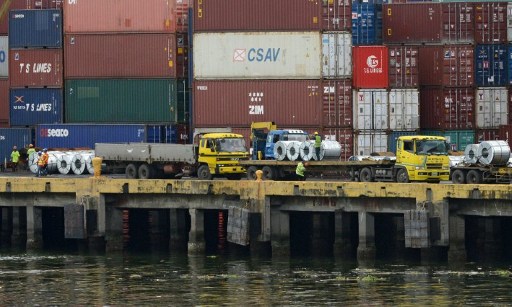Exports slid for the eighth consecutive month in July alongside a contraction in manufacturing output, the Philippine Statistics Authority (PSA) reported Thursday.
A preliminary PSA report showed that the value of merchandise exports went down by 1.8 percent last July to $5.33 billion from $5.42 billion a year ago.
The export sector has been contracting on a year-on-year basis each month since December 2014. The continuous slide in exports brought the end-July figure down by 4.1 percent to $34.21 billion from $35.66 billion last year.
According to the PSA, the year-on-year decline in July was caused by lower orders for eight major commodities: apparel and clothing accessories; chemicals; coconut oil; machinery and transport equipment; manufactured goods; metal components; minerals; and wiring sets used in aircraft, ships and vehicles.
“The lower value of outward shipments can be traced to reduced exports of total agro-based products and mineral products, but was moderated by sustained strong performances recorded from manufactured goods, most notably electronics and petroleum,” Economic Planning Secretary Arsenio M. Balisacan said in a statement.
The National Economic and Development Authority (Neda) noted that agro-based exports dropped by almost a fourth year on year to $322.2 million last July—the sixth straight month that such shipments declined—due to lower exports of fruits and vegetables like bananas and coconuts as well as processed agro-based goods like sugar.
“Although agro-based exports account for only 5 percent of the Philippines’ total exports, its implication to the domestic economy is significant as the agricultural sector hosts a sizable portion of the country’s work force. Measures to mitigate the impact of El Niño remain important in the near-term, which should include crop and/or work substitution programs,” said Balisacan, who is also the director-general of Neda.
Outbound shipments of minerals also dropped by 47.5 percent year on year to $228.7 million in July mainly on the back of lower revenues from chromium ore.
Balisacan warned that electronics—which makes up the bulk of Philippine exports—might also slow down toward the end of this year. “Easing commodity prices worldwide could dampen export revenue prospects in the near term, and the outlook for semiconductor exports remains on the downside. Exports of semiconductors are expected to slow down in the fourth quarter of the year owing to weak orders from the European Union, China and Japan,” the Neda chief disclosed.
Separately, the PSA reported that factory output, as measured by the Volume of Production Index (VoPI), contracted by 0.5 percent last July, reversing the 7.6-percent growth recorded a year ago.
The decline in July was nonetheless slower than the 3-percent and 1.6-percent year-on-year drops in May and June, Neda noted.
Neda blamed the slower manufacturing activities in July to “continuing weakness in global demand.”


